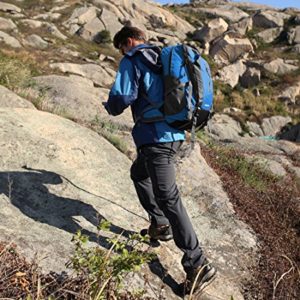Pests on the Path
 Hiking is a very popular type of recreational activity that many people enjoy being a part of. There is something truly great about being out in the great outdoors and seeing all that you can see. It is a great way to spend time with friends or partners and it is a great way to get a workout. However, with all things nature, there are risks involved with hiking and they may increase or decrease depending on the area where you are enjoying nature; especially where pests on the path are concerned. Do you know how to avoid some of the nastiest pests?
Hiking is a very popular type of recreational activity that many people enjoy being a part of. There is something truly great about being out in the great outdoors and seeing all that you can see. It is a great way to spend time with friends or partners and it is a great way to get a workout. However, with all things nature, there are risks involved with hiking and they may increase or decrease depending on the area where you are enjoying nature; especially where pests on the path are concerned. Do you know how to avoid some of the nastiest pests?
The Pests You May Discover
There are more types of insects in the wild than you can imagine. Most all of them are happy to be away from people and do their best to stay out of sight. Then there are those that almost seem to come looking for you. These pests include scorpions, snakes, mosquitoes, gnats, ticks, chiggers, and a large variety of other biting bugs. Some may come out during the evening and nighttime hours, but many of them are around throughout the day and night. All it takes is you venturing into their path and they will follow you throughout the rest of yours. Some of them may even bring diseases your way. Mosquitoes and ticks both spread disease through their bites. Scorpions are filled with venom that can make you sick. There are also snakes and some spiders that may be deadly if you are unable to get medical attention quickly. Therefore, it is important that you practice caution to protect yourself from these critters when hiking.
How to Protect Yourself from Insect Bites
 One thing you should do when hiking is dress for hiking. Wear hiking boots to protect your feet and ankles from scorpions or snakes. This may also keep ticks from being as likely to climb on you. Long sleeves and pants can protect you from insect bites. You should also avoid wearing perfumes or anything that may draw insects to you. In some cases, you may be able to wear darker clothing to keep mosquitoes and lovebugs off yourself. To keep a variety of bugs away from you, you can use bug spray and repellents to keep them at bay. This is especially useful for mosquitoes, gnats, and ticks. However, some people do not like to wear repellents unless they are natural sprays, and there is some debate about their effectiveness. You can read more about those at the Proven Pest Prevention website. The thing is; sprays are the most effective, easily accessible types of insect repellent available. They are available in small bottles or cans and can repel insects for hours. This is very important when hiking the trails since most people do not venture out just for a short stroll. Most people go out for hours or days at a time.
One thing you should do when hiking is dress for hiking. Wear hiking boots to protect your feet and ankles from scorpions or snakes. This may also keep ticks from being as likely to climb on you. Long sleeves and pants can protect you from insect bites. You should also avoid wearing perfumes or anything that may draw insects to you. In some cases, you may be able to wear darker clothing to keep mosquitoes and lovebugs off yourself. To keep a variety of bugs away from you, you can use bug spray and repellents to keep them at bay. This is especially useful for mosquitoes, gnats, and ticks. However, some people do not like to wear repellents unless they are natural sprays, and there is some debate about their effectiveness. You can read more about those at the Proven Pest Prevention website. The thing is; sprays are the most effective, easily accessible types of insect repellent available. They are available in small bottles or cans and can repel insects for hours. This is very important when hiking the trails since most people do not venture out just for a short stroll. Most people go out for hours or days at a time.
If you are staying out overnight on the trails, you should take along a tent. If not a full-sized tent, then at the very least a one-man tent. From there, you should keep it closed up until you are ready to go to sleep in it and check it to make sure that no surprises have gone inside.